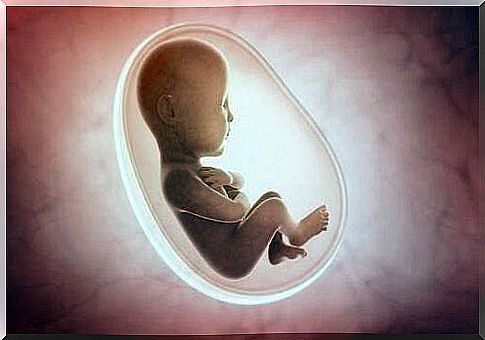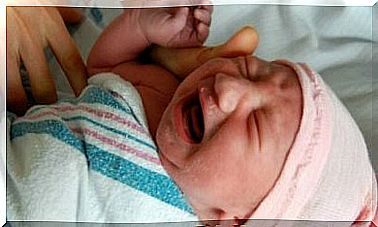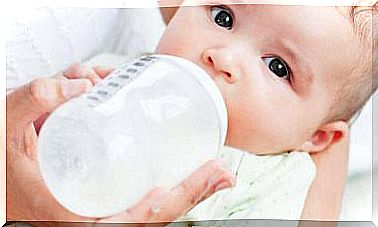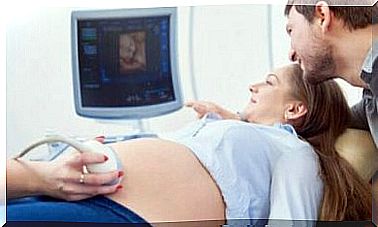Malformations At Birth: Types And Prevention

Malformations at birth are congenital anomalies. They can be either structural or functional. They occur while the baby is in the womb and they are detected during pregnancy, at birth or afterwards.
A small percentage of malformations at birth
Today, most women give birth to healthy babies. This is due to the great medical advances and public order in developing countries.
As a result, the incidence of birth defects has been significantly reduced.
In many countries, congenital malformations are the cause of infant mortality, chronic illness and disability. Chronic disabilities have a major impact on the lives of the people affected, as well as their families, the health care system and society in general.
According to the World Health Organization (WHO), fetal malformations affect 1 in 33 infants. It is estimated that 3.2 million babies with disabilities are born each year.
Early detection of these diseases through diagnostic methods during childbirth is fundamental. These tests allow specialists to implement correct and effective therapies for many embryonic irregularities.

It is difficult to pinpoint a specific cause of 50% of birth defects. But specialists have managed to identify certain underlying factors. Socioeconomics, environment, demographics, genes, infection, and maternal nutritional status may play a role.
Types of malformations at birth
- The most common malformations: cleft lip and palate, cerebral palsy, hypothyroidism, fetal alcohol syndrome or neural tube defects.
- Cardiac defects: Atrial septal defect and ventricular defects, ductus arteriosus persistens, aortic stenosis and aortic coarctatio. But also hypoplastic left heart syndrome and Steno-Fallot’s tetralogy.
- Intestinal defects : Esophageal atresia, congenital diaphragmatic hernia, pyloric stenosis, Hirschsprung’s disease, gastroschisis, omphalocele, anal atresia and bile duct atresia.
- Congenital diseases: Cystic fibrosis, Down syndrome, fragile X syndrome, muscle wasting, phenylketonuria, sickle cell anemia, Sandhoff’s disease, etc.
- Infections that can cause birth defects: rubella, cytomegalovirus, rabbit disease, genital herpes, scabies, chickenpox, congenital syphilis.
How to detect malformations
The discovery of these pathological processes can take place during the following periods:
- Before the conception of a baby.
- During the conception period. It includes basic reproductive health practices, genetic testing and counseling.
- During the neonatal period.
Treatment
Pediatric surgical procedures can correct a large number of structural, congenital anomalies such as hare shards.
Physicians may also administer early treatment to children with functional changes such as thalassemia and congenital hypothyroidism.
Prevention of congenital malformations
Preventive public health policies and campaigns offered by various bodies in the field of health and sanitation are extremely effective in preventing birth defects.
The implementation of these policies has reduced the incidence of birth defects. Some of these include:
- Changes in women’s diets that are of childbearing age. The guarantee of the intake of necessary minerals and vitamins such as folic acids.
- The guarantee that pregnant women do not ingest substances that may be harmful to the developing baby. These harmful substances include, for example, narcotics, alcohol and tobacco.

- Regular doctor visits and the performance of tests before conception and through pregnancy. This will help detect and control diseases such as diabetes, which can be controlled through a specific diet.
- Reduction or avoidance of exposure to harmful substances such as heavy metals or insecticides during pregnancy.
- Control of exposure to radiation (and ingestion of drugs during pregnancy). Exposure / intake must always be evaluated in advance with regard to risks and benefits for both the mother’s and the baby’s health.
- Health-enhancing programs. This includes, for example, making vaccinations more accessible. Especially vaccines against rubella. Vaccinations against rubella in childhood are effective in preventing the disease. If a woman has not yet had the disease, she can get a vaccination during pregnancy.
Science has made great strides in recent years. Malformations at birth are less and less common thanks to advanced science. But it is important to prevent and detect diseases early – before, during or after pregnancy.









